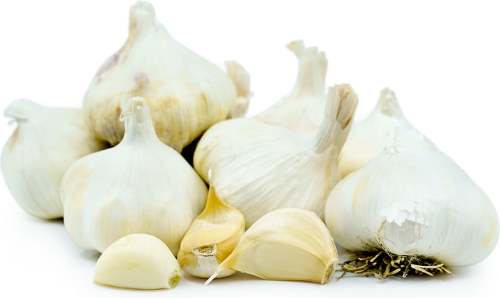Featured Specialty Crop - Garlic!
- christascott097
- Oct 15, 2018
- 2 min read
Garlic Facts & Trivia
Garlic, botanically known as Allium Sativum, is the name dedicated to many softneck, artichoke varieties that are commonly found in commercial markets. Softneck varieties are favored as they are easy to grow, less particular about growing conditions, slower to bolt, and produce more cloves per bulb. In general, 98% of Garlic found in the supermarket is one of two types, California Early and California Late. A unique feature of California Early is its ability to be used to make powders, seasonings, and salts. Garlic has long been used by a variety of cultures such as Greek, Italian, Chinese, Egyptian and European for its culinary, medicinal, and spiritual properties. Garlic is mainly produced in Gilroy, California, which is known as the commercial garlic capital of the world.
. The type of Garlic found in supermarkets largely depends on the commercial company and the supplier they choose to purchase the garlic from.
Why is Garlic So Good For You?
Garlic is rich in manganese and vitamin B6, as well as vitamin C and copper, and contains selenium, phosphorus, vitamin B1 and calcium. Garlic contains allicin, a sulfur-containing compound that provides antioxidant and antibacterial properties. Allicin is produced when garlic is crushed and is more potent in raw form.
What does it look/taste like?
Garlic bulbs range from medium to large, averaging anywhere between 5-8 centimeters in diameter, and consist of several cloves arranged in a number of layers depending on the variety. Each clove of Garlic is encased in its individual wrapper, and the bulb itself has layers of thin, flakey wrappers to protect the cloves. Once the cloves are crushed or pressed, enzyme compounds are released, producing a sulfur-based molecule known as allicin, which is responsible for giving garlic its renowned pungent aroma and flavor.
How do you eat them?
Garlic can be consumed in both raw or cooked applications.
Raw garlic tends to have a stronger flavor than cooked; and crushing, chopping, pressing or pureeing garlic releases even more of its oils providing a sharper, more assertive flavor than slicing or leaving it whole.
Garlic can be used in any dish that calls for garlic such as garlic chicken, spaghetti Bolognese, potato soup, to stews, but it also does especially well as the central flavor in marinades, dressings, sauces, and salts.
Roasting garlic will enhance its flavor and add a subtle sweetness.
Pair Common garlic with acidic fruits and vegetables such as tomatoes, tomatillos, and citrus, meats such as poultry, beef, pork and seafood, herbs like basil, thyme, and oregano, and other vegetables such as artichokes, snap peas, broccoli, asparagus, and Brussel sprouts.
Garlic will keep between one to four months, depending on the specific variety, when stored in a cool and dry place.
Source: www.specialtyproduce.com



